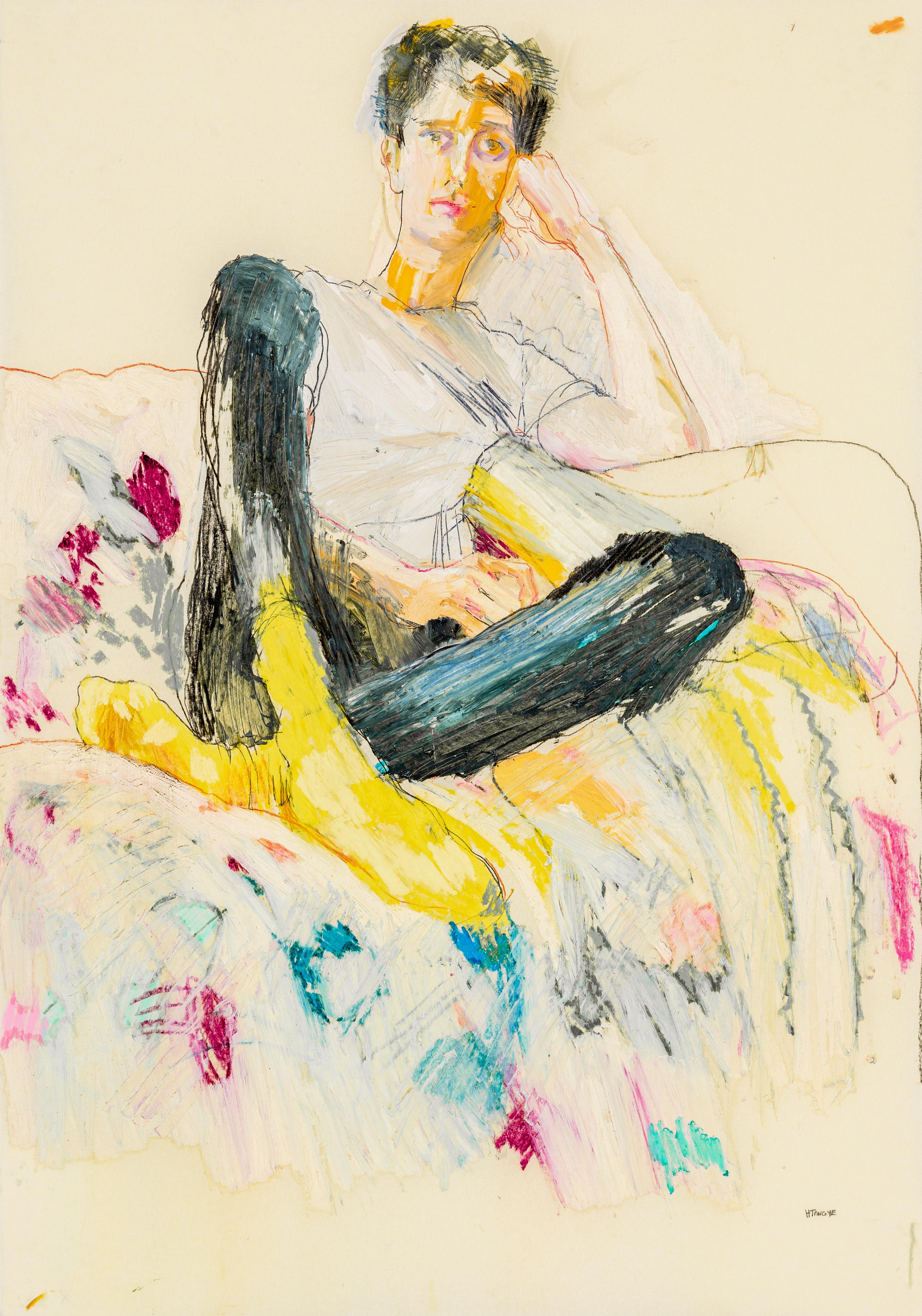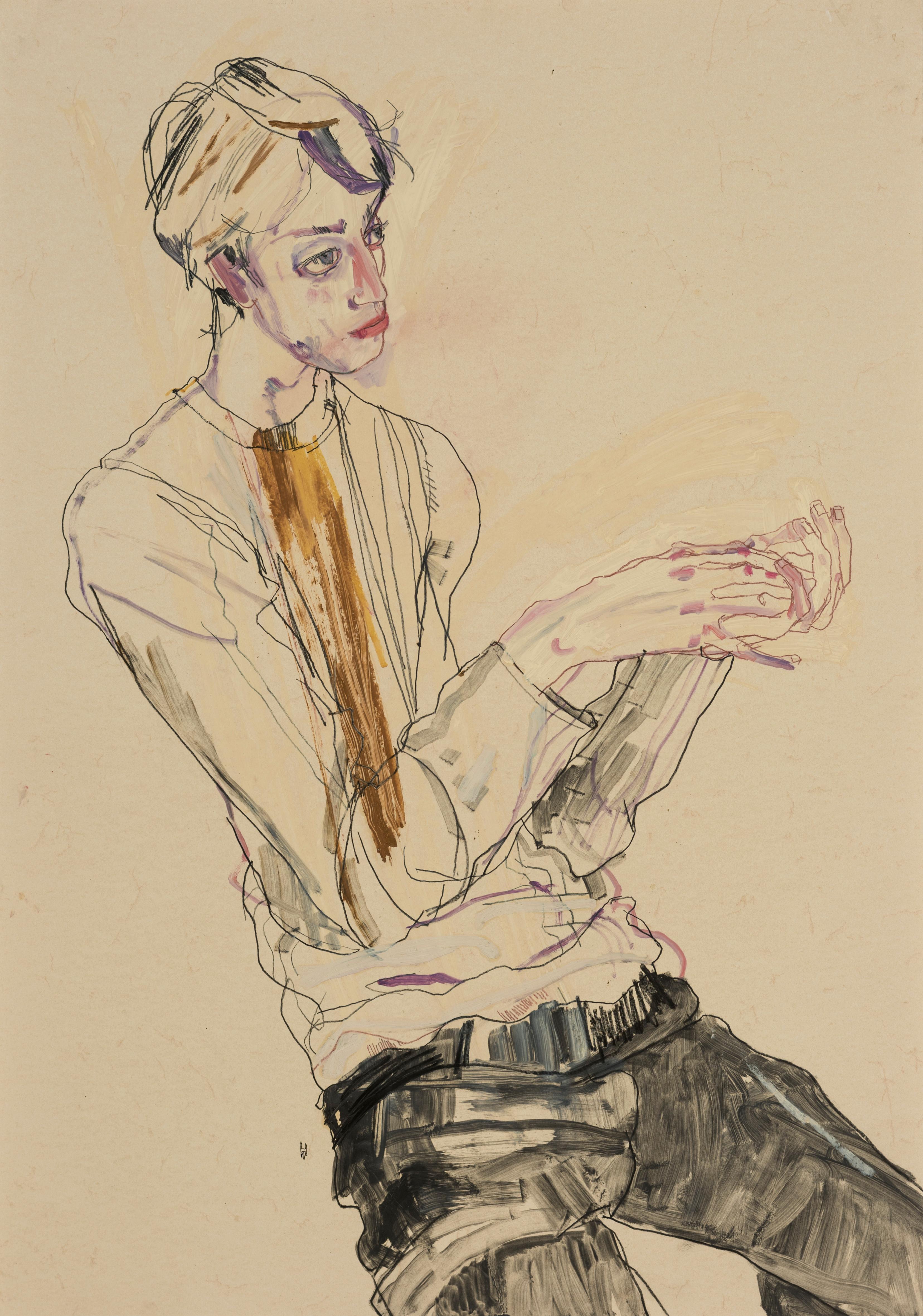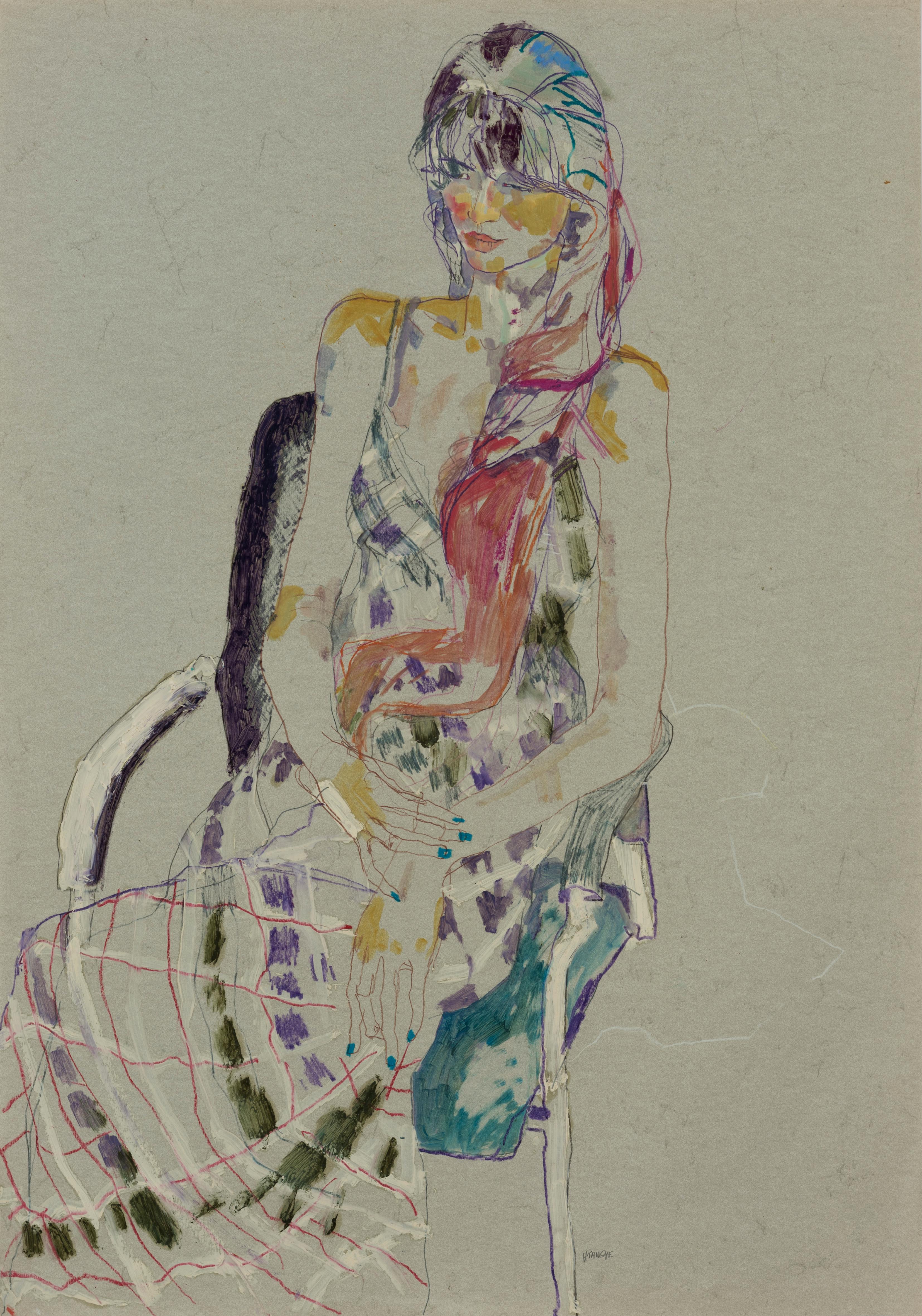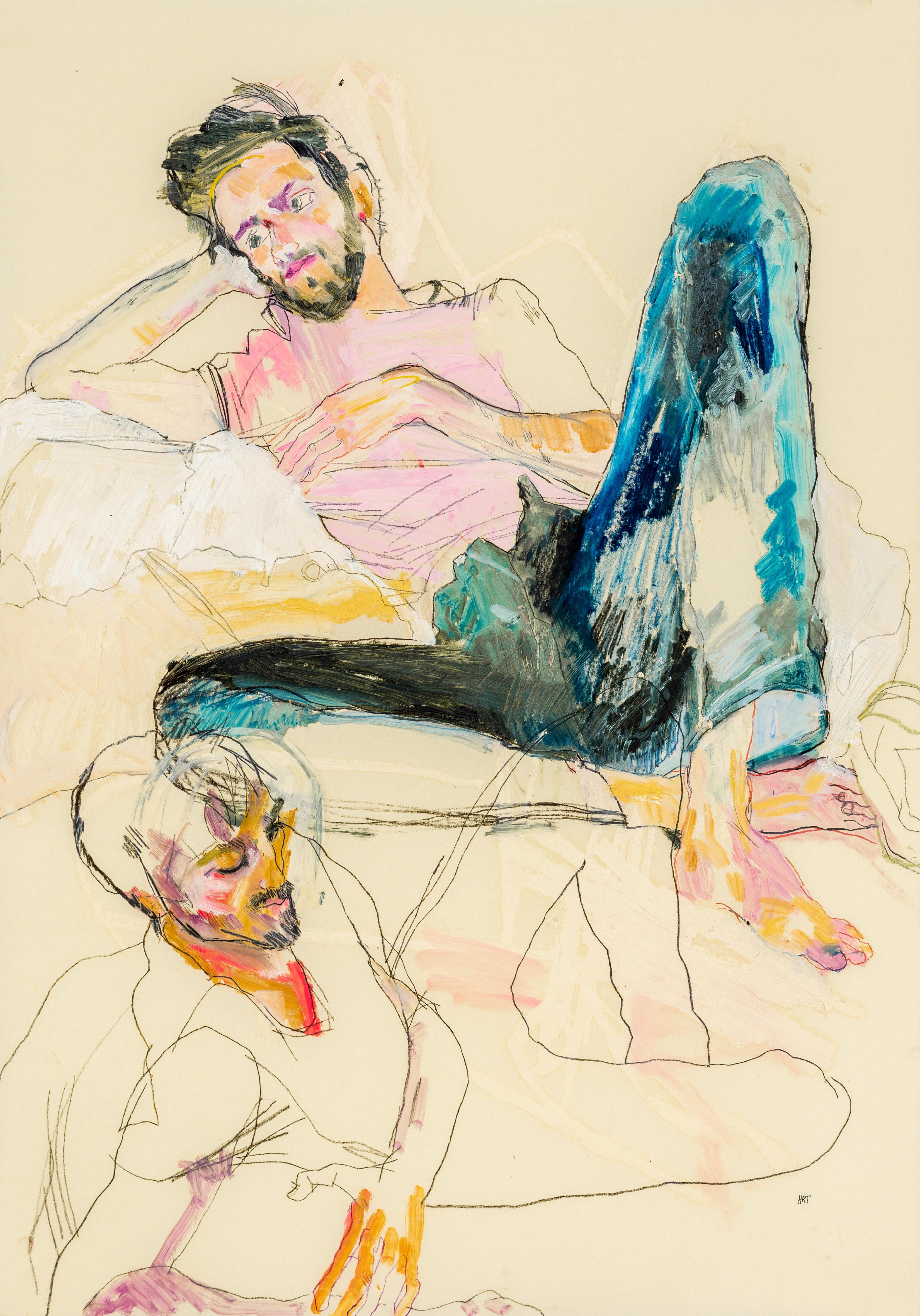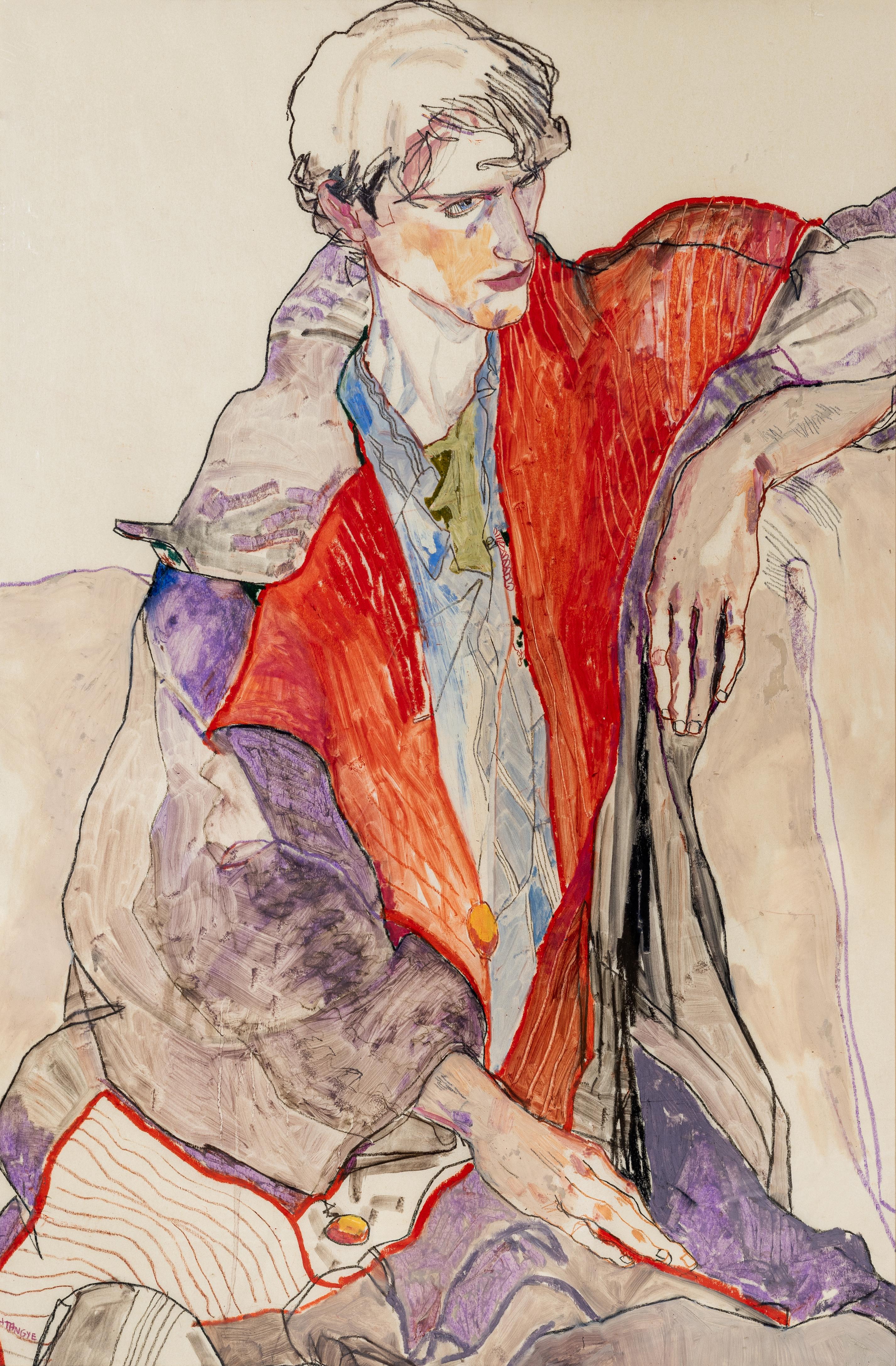Items Similar to Buddha, Sarnath Pillar, Qutub Minar, Gupta Empire, Nataraja, Watercolor"In Stock"
Want more images or videos?
Request additional images or videos from the seller
1 of 14
Saikat PatraBuddha, Sarnath Pillar, Qutub Minar, Gupta Empire, Nataraja, Watercolor"In Stock"2017
2017
About the Item
Saikat Patra - Untitled - 15 x 11 inches (unframed size)
Watercolour on paper
Style : Saikat Patra highly talented water colorist from Bengal.
In this series of 10 water colour, Saikat traces few game changing moments in India. From invasion / war to coronation, from spirituality to education Saikat beautifully traces few important moments from Historical India.
In order of the series of the events :
a) Buddha with Angulimalla : ( 600 – 400 BC )
When Buddha's teaching resonated with the people and the ruthless serial killer redeemed and converted himself to follow the principle of Buddhism.
b) Ashoka surveying the Sarnath Pillar : (400 – 200 BC)
The Mauryan empire reached the peak of its extent under the rule of Ashoka(reign : 273-232 BCE).Here King Ashoka is scene looking at the Lion Capital of Ashoka, a sculpture of four Asiatic Lions; a graphic representation of which was adopted as the official Emblem of India in 1950.
c) Questions of Milinda : (200 – 100 BC)
Depicts the Questions of Milinda, a Buddhist text which record a dialogue Buddhist Sage Nagasena and the Indo - Greek King Menander who is set to have converted after meeting Sage Nagasina.
d) The Kushan Kings encouraged all religions :
One of the most interesting aspects of the Kushan empire is its spirit religious toleration. A broad pantheon of dieties on Kushan coins indicates that the empire was characterized by tremendous religious toleration. We find on Kushan coins, Greek Gods such as Helios and Salene, Iranian gods such as Nana, Mithra , Mao and Athsho, Hindu gods such as Shiva and Kartikeya, the
Zoroastrian deity Ahura Mazda and the Buddha. The drawings shown above are also powerful evidence of the syncretic nature of many of the deities which were worshipped from different traditions.
e) Gupta Empire : India’s Golden Age
Kalidasa : ( 5th century AD ) Poet and playwright
Vatsyayana : ( 3rd - 6th century AD) Author of the Kama Sutra
Aryabhata : ( 5th century AD ) Mathematician, astronomer
The peace and prosperity created under the leadership of the Guptas enabled the pursuit of scientific and artistic endeavours. This period was marked by extensive inventions and discoveries in science & technology, engineering, art, literature, mathematics, astronomy, religion, and philosophy that crystallized the elements of what is known as the Golden Age of India.
f) Shiva as a dancing Nataraja, Badami : ( 600 – 750 AD )
The period of Badami Chalukyas the first cave portrays the Tandava-dancing Shiva as Nataraja, 5 feet (1.5 m) tall, has 18 arms in a form that expresses the dance positions arranged in a geometric pattern. While most of the arms express mudras (symbolic hand gestures), some of the arms hold objects such as drums, a trident and an axe; some also have serpents coiled around them. Shiva has his son Ganesha and the bull Nandi by his side.
g) Prithviraj Chauhan being taken captive by Mohammed Ghor in 1192 : ( 1050 – 1200 AD )
After defeating the first time at the Battle of Tarain, Muhammad Ghor returned to Ghazna and made preparations to avenge his defeat to defeat the Chauhans in the second battle of Tarain in 1192. Prithviraj himself tried to escape on a horse, but was pursued and caught. Subsequently, Muhammad of Ghor captured Ajmer after killing several thousand defenders, enslaved many more, and destroyed the city's.
Nalanda laid waste by Bakhtiyar Khalji, 1193 AD : (1200 – 1300 AD )
Muhammad Bakhtiyar Khalji was a Turkic military general under Qutub-ud-din Aibak.
The University of Nalanda was ransacked, its library torched and most of its inhabitants killed by an army under Bakhtiyar Khalji in c. 1200 AD. It is perhaps a coincidence worth nothing that while these Indian institutions of learning were being destroyed, European institutions such as Oxford andCambridge were being set up.
h) The Qutub Minar with the Iron Pillar in the backdrop : ( 1200 – 1300 AD )
The Qutub Minar which is named after Qutb-ud-din Aibak was completed by Sultan Iltutmish in 1220. Its ground storey was built over the ruins of the Lal Kot, the citadel of Delhi. An inscription in Persian at the mosque's inner eastern gateway states that material used in its construction was salvaged from the demolition of twenty-seven of
Delhi's Hindu and Jain temples. Pillars from these demolished temples were used
in the mosque, with their iconography intact. The nearby Iron Pillar which predates the Islamic Minar and still bears its Brahmic Inscriptions which is said to have been fashioned at the time of Chandragupta Vikramaditya (375–413 AD) of the Gupta Empire, is originally said to have been installed in Udayagiri ( near Bhopal ) and brought to Delhi by subsequent rulers.
i) Akbar in his Ibadat Khana, 1580 AD : (1600 – 1700 AD )
In 1526, the Mughal Empire in India was established by Babur who was also deeply interested in religious and philosophical matters and built the Ibadat Khana as a religious debating house. He encouraged Hindus, Roman Catholics, Zoroastrians, Jains and even atheists to participate in these debates. Akbar’s interaction with various religious theologians had convinced him that despite their differences, all religions had several good practices.
j) Shivaji’s coronation with gold hons in 1674 : (1700 – 1800 AD )
The Maratha empire formally existed from 1674 with the coronation of Chhatrapati Shivaji who was crowned king of the Marathas in a lavish ceremony at Raigad on 6 June 1674. Pandit Gaga Bhatt officiated, holding a gold vessel filled with the seven sacred waters of the rivers Yamuna, Indus, Ganges, Godavari, Krishna and Kaveri over Shivaji's head and chanted the coronation mantras. After the ablution, Shivaji bowed before his mother, Jijabai and touched her feet. Nearly fifty thousand people gathered at Raigad for the ceremonies. Shivaji was bestowed with the sacred thread , with the Vedas and was bathed in an “abhisheka”. Shivaji was entitled Chhatrapati ( Lord of the Kshatriyas ). It is said that as part of the coronation rituals, Shivaji was showered by his ministers with hundreds of Hons ( gold coins) which were poured the over the king's body as he sat on his throne.
About the Artist and his work :
Born : Haldia (West Bengal), 1976.
Qualification : Kolkata Art College.
Participations :
1998-2000 : Haldia Town Hall
1998-2008 : West Bengal State Academy
1999 : Gaganendra Pradarsha Shala, Kolkata
2003-2004 : Annual Exhibition at Academy of fine Arts
2007 : Annual Exhibition at Birla Academy of Art and Culture, Kolkata
2005-2006 : Society of Oriental Art, Kolkata
2006-2007 : Hotel Hyatt Regency, Kolkata
2006-2007 : Park Hotel, Kolkata
2006-2007 : Taj Hotel, Delhi
2006-2007 : Taj Krishna, Hydrabad
2007 : Taj Hotel, Bangalore
2005-2007 : Annual Exhibition at Samakal Art Gallery
2007 : Angan Art Gallery, Kolkata
2007 : Nakshatra Art Gallery, Kolkata
2007 : Rabindra Bhavan, New Delhi
2005 : Kala Mela, Birla invited
Solo :
1998 : Haldia Town Hall, West Bengal
2006 : Pioneer Art Gallery, New Delhi
2006 : Gufa Art Gallery, Amedabad
Award :
1992 : International Award, New Delhi
2001 : College Award (Drawing), Kolkata
2005 : Best Award, All India Annual Exhibition- Special award of Indian Society of Oriental Art.
Workshops :
2003-2004 : Calcutta Book Fair
1998 : State Academy Workshop
2001 : Art Society Borisha.
- Creator:Saikat Patra (1976, Indian)
- Creation Year:2017
- Dimensions:Height: 23 in (58.42 cm)Width: 19 in (48.26 cm)Depth: 1 in (2.54 cm)
- Medium:
- Movement & Style:
- Period:
- Condition:
- Gallery Location:Kolkata, IN
- Reference Number:1stDibs: LU60432442721
About the Seller
4.9
Vetted Seller
These experienced sellers undergo a comprehensive evaluation by our team of in-house experts.
Established in 2004
1stDibs seller since 2017
119 sales on 1stDibs
Typical response time: 23 hours
- ShippingRetrieving quote...Ships From: Kolkata, India
- Return PolicyA return for this item may be initiated within 7 days of delivery.
More From This SellerView All
- Under the Scanner, Watercolor, Red, Grey, Green by Indian Artist "In Stock"By Prasanta SahuLocated in Kolkata, West BengalSet of 2 works Artist : Prasanta Sahu - Title : Under the Scanner - 15 x 11 inches each (unframed size) 25 x 22 inches ( Framed) Medium : Water Colour on paper Prasanta’s invent...Category
2010s Contemporary Figurative Paintings
MaterialsPaper, Mixed Media, Watercolor
- Ganesh, God, Fortune, Watercolor on paper, Red, Yellow, Bengal Artist "In Stock"By Gaurango BeshaiLocated in Kolkata, West BengalGouranga Beshai - Ganesh - 22 x 22 inches ( unframed size ) Watercolor on paper ** Shipped in roll form. Style : Drawing inspiration from Hemen Mazumdar, Gouranga too has fashioned ...Category
2010s Contemporary Figurative Paintings
MaterialsPaper, Watercolor
- Ganesh, God, Watercolor on paper, Red, Pink, Brown by Bengal Artist "In Stock"By Gaurango BeshaiLocated in Kolkata, West BengalGouranga Beshai - Ganesh - 22 x 22 inches ( unframed size ) Watercolor on paper ** Shipped in roll form. Style : Drawing inspiration from Hemen Mazumdar, Gouranga too has fashioned ...Category
2010s Contemporary Figurative Paintings
MaterialsPaper, Watercolor
- Old Kolkata, Watercolour on Paper by Contemporary Artist 'In Stock'By Saikat MaityLocated in Kolkata, West BengalSaikat Maity - Old Kolkata - 14 x 16 inches (Unframed Size) Watercolour on Paper Saikat uses the ‘wash’, ‘glaze’ and ‘wet in wet’ methods of application to produce a huge variety of striking works. The artist has selected the iconic landmark of Kolkata city, during the peak of the British Empire in India. This ethereal scene with the Heritage Building and motor cab is captivating and encapsulates the character of the heritage city with drama and poise. The watercolor artist has avoided excessive detailing and by highlighting just the key features of a Heritage Building & Old Kolkata Streets with crumbling structures, results in a fresh, inviting composition. Style : Saikat does his painting in stages, starting with large, vague color areas established on wet paper, then refines the image through a sequence of washes and glazes, making the works as durable as oils or acrylics. The pigments are held by arabic gum with additives like glycerine and solvents that give the medium durability. Watercolors appear more vivid than acrylics or oils because the pigments are laid down in a more pure form with fewer fillers obscuring the pigment colors. Multiple layers of watercolor thus achieve a very luminous effect. Water being an active and complex partner in the watercolor painting process, it changes the outlines and appearance of the paint as it dries. Saikat has mastered the difficult art of anticipating and leveraging the behavior of water, rather than attempting to control it. Saikat uses the ‘wash’, ‘glaze’ and ‘wet in wet’ methods of application to produce a huge variety of striking works, definitely worth collecting. In my watercolour paintings, the beauty lies in the freshness of colours, their transparency and purity along with a slightly unfinished look resulting in a more natural effect. My watercolours try infusing life in common place objects and making them look spectacularly real. About the Artist & his art works : Born : 1981. Education : 2007 : B.V.A (Drawing & Painting ) from Indian College of Art & Draftsmanship in Kolkata with 1st Class. Group Shows : Saikat has exhibited his paintings in group shows across Bangalore, Kolkata, Chennai and Mumbai. Awards & Recognition : 2007 - Best Water...Category
2010s Contemporary Figurative Paintings
MaterialsPaper, Watercolor
- Bibi Playing Tabla, Watercolor, Gouache on paper, Contemporary Artist "In Stock"By Bhaskar ChitrakarLocated in Kolkata, West BengalBhaskar Chitrakar - Untitled - 15 x 11 inches (unframed size) Watercolor & Gouache on Paper. About the Artist & his works : Born : 1978. Bhaskar Ch...Category
2010s Contemporary Figurative Paintings
MaterialsPaper, Watercolor, Gouache
- Frida Kahlo, Watercolour & Gouache on Paper by Contemporary Artist “In Stock"By Bhaskar ChitrakarLocated in Kolkata, West BengalBhaskar Chitrakar - Frida Kahlo - 15 x 11 inches (unframed size) Watercolor & Gouache on Paper, 2020 About the Artist & his works : Born : 1978. Bh...Category
2010s Contemporary Figurative Paintings
MaterialsPaper, Watercolor, Gouache
You May Also Like
- Nobu (Looking Down), Mixed Media on Pergamenata parchmentBy Howard TangyeLocated in London, GBHoward Tangye (b.1948, Australia) has been an influential force in fashion for decades. Lecturing at London’s Central Saint Martins for 35 years, including 16 years as head of BA Wom...Category
2010s Contemporary Portrait Drawings and Watercolors
MaterialsPaint, Paper, Parchment Paper, Charcoal, Crayon, Oil Crayon, Oil Pastel,...
- Wes Gordon (Lying Down), Mixed media on grey boardBy Howard TangyeLocated in London, GBHoward Tangye (b.1948, Australia) has been an influential force in fashion for decades. Lecturing at London’s Central Saint Martins for 35 years, including 16 years as head of BA Womenswear. There, he tutored many contemporary greats, including John Galliano, Stella McCartney, Christopher Kane, Wes Gordon...Category
Early 2000s Contemporary Figurative Paintings
MaterialsGesso, Paint, Paper, Charcoal, Crayon, Oil Crayon, Oil Pastel, Pastel, W...
- Oleg (Kimono), Mixed media on ochre parchment paperBy Howard TangyeLocated in London, GBHoward Tangye (b.1948, Australia) has been an influential force in fashion for decades. Lecturing at London’s Central Saint Martins for 35 years, including 16 years as head of BA Wom...Category
2010s Contemporary Figurative Drawings and Watercolors
MaterialsPaint, Paper, Parchment Paper, Charcoal, Crayon, Oil Crayon, Oil Pastel,...
- Tom (Sitting, flowers, through Zoom), Mixed media on Pergameneta parchmentBy Howard TangyeLocated in London, GBHoward Tangye (b.1948, Australia) has been an influential force in fashion for decades. Lecturing at London’s Central Saint Martins for 35 years, including 16 years as head of BA Wom...Category
2010s Contemporary Figurative Paintings
MaterialsPaint, Paper, Parchment Paper, Charcoal, Crayon, Oil Crayon, Oil Pastel,...
- Ben Waters (Seated, Hand Holding), Mixed media on Pergamenata parchmentBy Howard TangyeLocated in London, GBHoward Tangye (b.1948, Australia) has been an influential force in fashion for decades. Lecturing at London’s Central Saint Martins for 35 years, including 16 years as head of BA Wom...Category
2010s Contemporary Figurative Paintings
MaterialsGesso, Paint, Paper, Parchment Paper, Charcoal, Crayon, Oil Crayon, Oil ...
- Moira C. (Sitting - Long Red Hair), Mixed media on grey parchmentBy Howard TangyeLocated in London, GBHoward Tangye (b.1948, Australia) has been an influential force in fashion for decades. Lecturing at London’s Central Saint Martins for 35 years, includi...Category
2010s Contemporary Portrait Drawings and Watercolors
MaterialsPaint, Paper, Parchment Paper, Charcoal, Crayon, Oil Crayon, Oil Pastel,...
Recently Viewed
View AllMore Ways To Browse
Game Change
Game Changer
Set Of Pillars
Empire Art Gold
Iron Pillars
Second Empire Style
House Pillar
Pillar Contemporary
Set Of Four Watercolors
Empire Style Painting
Persian Hand Painting
Roman Empire Art
Buddha Art Painting
Regency Drum
Lion Contemporary Painting
Iron Horse Sculpture
Empire Style Library
Military General
